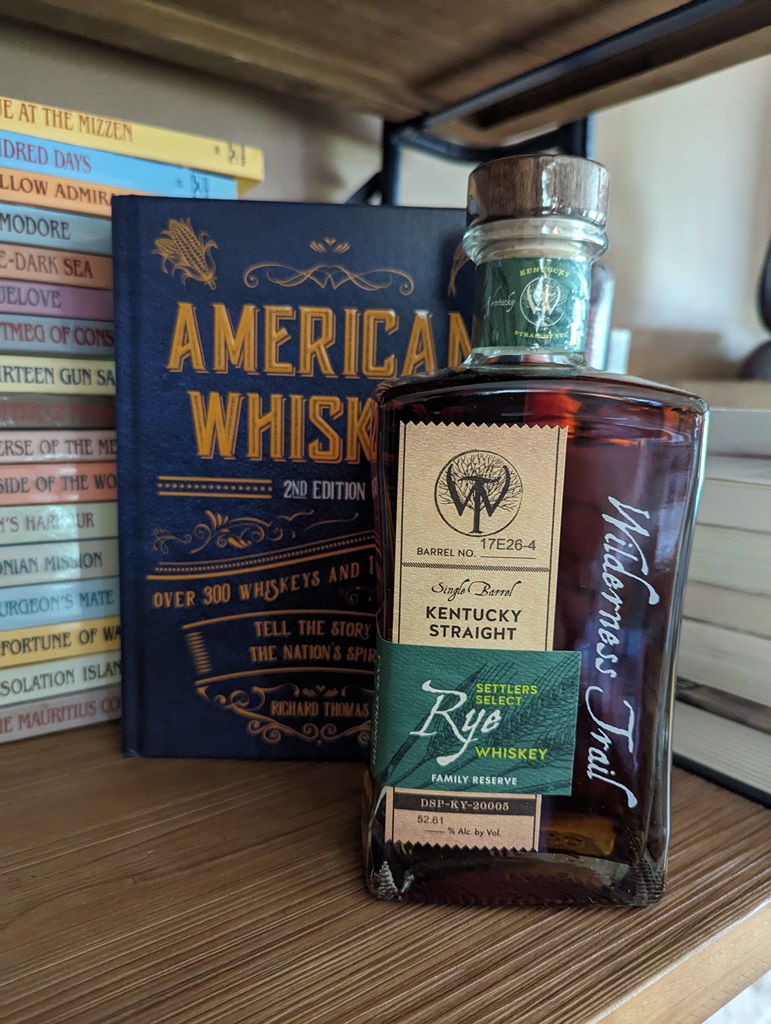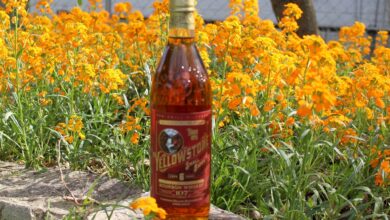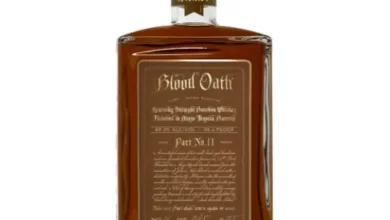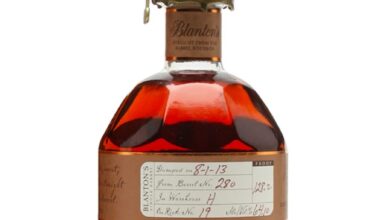WhistlePig Rye Whiskey Review
Updated December 9, 2015
By S.D. Peters
Average Rating: A

(Credit: Whistle Pig
For Rye drinkers, Rye whiskey distilled from 100% rye was once about as rare as a 78 rpm copy of D.A. Hunt’s sole Sun Records release, Greyhound Blues. It’s still almost that rare, but whereas only one known copy of Greyhound Blues surfaced almost four years ago, several small batches of 100% Straight Ryes have appeared recently, and savoring these ryes can be as memorable as finding an obscure blues record.
From Vermont comes one of this rarefied breed: WhistlePig 100/100 Straight Rye. Hand-selected by Master Distiller Dave Pickerell, WhistlePig 100/100 Straight Rye is bottled at WhistlePig Farms, a farm on storied Vermont land which produces the certified organic rye that goes into WhistlePig Straight Rye Whiskey. Vermont’s history as one of the rarest breeds of States in the Union – a leader in progressive independence – recommends this native Rye as one of significance.
The Rye
In the glass, WhistlePig’s golden blush is a welcoming dawn, that sliver of time before the reality of the workaday world kicks in. (Rye/corn mashbills tend to a more weathered, dusky amber – the alternately welcoming end of the workaday world.) That dawn breaks on déjà-vu; for WhistlePig 100/100 Straight Rye is quite similar to another 100%, 100 Proof, 10-year Straight Rye, Masterson’s 10 Year Old, and in the interest of full disclosure, the notes that follow echo my review of that fine Straight Rye.
Bottled at 50% alcohol (100 Proof) after aging 10 years in what Whistle Pig calls “a unique double-barrel process”, WhistlePig 100/100 Straight Rye is another masterpiece of distiller’s art: a Rye drinker’s Rye, full of the complex simplicity and subtle candor that distinguish rye from other whiskeys. Sea salt, light tobacco, a touch of capers, and loamy earthiness drift away on shavings of vanilla dipped in caramel and sprinkled with cloves. Take a sip, and those flavors return softly, emerging from a woody pepper with a dash of black cherry. The finish goes long, with the tobacco more pronounced and the black cherry slowly taking on the character of black raspberry preserves, before concluding in delicate vanilla that drifts away into velvety allspice.
I’ve found that 100% Ryes draw out the delicate sweetness that naturally underscores the whiskey’s spicy character, a sweetness that’s lost in the syrupy quality of distilled corn. The balance between sweet & spice gives 100% Rye a light, airy texture that lets 100 Proof drift by as if it was 80, and delivers a full range of flavors that higher proofs sometimes obfuscate. Whistle Pig 100/100 Straight Rye fulfills those expectations.
In my Masterson’s review, I noted that the bottle seemed designed to demand attention, as if the whiskey needed more than the promise of being 100% rye to pique the drinker’s interest. Some might say the bottle is designed, rather, to compliment the delicate nature of a small-batch, carefully crafted 100% Straight Rye, and I concede that argument has it’s merits. In my opinion, however, the outward simplicity of a mashbill that’s 100% of a single grain needs no fancy bottle; the rarified nature of the Rye will speak for itself. My sole complaint about Whistle Pig is the same: the bottle screams what this distinguished Rye in fact delivers with a content sigh.
Addendum by Richard Thomas
I found the nose delivered a stiff breeze rich with a spice mix of mint, anise and vanilla bean, plus a pinch of dill and a sprinkle of resiny pine shavings for contrast. It’s an airy, but still strong scent. The texture on the palate stays in that lighter vein, but once again without lightening the flavor. It smacks of mint and licorice, ginger and vanilla, honey sweetness and a dry earthiness. Going down, the whiskey leaves a gingery afterglow in the mouth, but this winds down directly and leaves a pleasant ball of warmth clinging behind your ribs.
The Price
100% Ryes do not come cheap, and WhistlePig is no exception, averaging $70.00 for 750 ml. Don’t be discouraged, though: this is one to enjoy on special occasions, and they wouldn’t be very special if they occurred every day.
Editor’s Note: Whistle Pig is made in Canada and bottled at the Whistle Pig farm in Vermont.
Editor’s Update (December 2015): We were informed that in the near future WhistlePig will be a 97 or 98% rye. Reportedly the mashbill change it to help achieve and continue consistency.





Any idea how long Alberta Distiller’s has been using Vermont certified organic rye that goes into WhistlePig Straight Rye Whiskey?
was about to make a purchase. as usual i read the label—– PRODUCT OF CANADA! what is this another bait ‘switch? stuff made by a bulk distiller, labeled, and sold under a catchy name. this happens all the time. there are bulk distillers in the USA heartland that sell to “bottlers”. why is that not illegal? let the buyer beware!
EXACTLY. They say it was PRODUCED there NOT distilled there.
I love this stuff, easily the best rye I’ve had. I think it’s well above the Masterson’s, I’ve had a couple of bottle or both now.
I’m not at all put off by the fact that it’s Canadian Rye. The Canadians have been distilling rye all along but they usually blend it to make much less distinctive whiskeys. Whistle Pig is completely up front about this in their literature and web site.
I hope I get this story correct. A large distiller in Indiana bought millions of gallons of whiskey from Seagrams. Years ago when rye was not in fashion they couldn’t get rid of it quick enough and there it sat… in barrels. The “rye” craze hit and all whiskey “PRODUCERS” had to do is get in line and lay their money down. Now to be sure…. some of the whiskey bought was excellent… but none of it was distilled by the company… IT WAS “made” by Seagrams (Canadian). Many whiskeys have been using Indiana whiskey for years. Folksy stories and clever labeling rules the day. I’m not saying its not good stuff… I just though you should know that 7 Crown is cheaper and came from the exact same factory. FACTORY. Check out “Whiskey Professor” website. Interesting reading.
Your story confuses the facts a bit. The Indiana distillery now known as MGP was owned and operated by Seagrams for decades. Although it was a Canadian drinks corporation, Seagrams owned many facilities in the U.S., including Four Roses. My understanding is that the last distillery operating in Maryland before the craft boom was a Seagrams plant too.
The distillery that was Seagrams Lawrenceburg, then LDI and now MGP didn’t buy, import and horde rye whiskey from Canada. It made the stuff under the supervision of Larry Ebersold and Greg Metze as part of the normal operations of a Canadian company. The Canadian ownership was about as relevant as the Japanese ownership of Four Roses and Jim Beam are today.
Some of WhistlePig’s products are based on rye sourced from Indiana, while others (this one in particular) are based on rye sourced from Alberta Distillers in Canada. That is, perhaps, the root of your confusion. One sometimes needs a map to track all the what comes from where of these things, plus a timeline to track how different brands and properties change hands.
These days WhistlePig is transitioning off their sourced whiskey. Their Farmstock line is a blend of their young in-house rye with their sourced ryes. A few years from now, they will likely introduce an all-in-house whiskey. A few years after that, they will likely have phased out all the sourced stuff (aged, sourced whiskey is a finite resource)